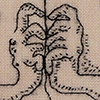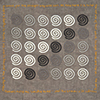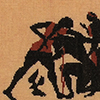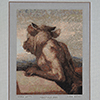Ariadne’s Thread. 2008–12 Click on images to view project. |
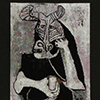 |
||||||||
 |
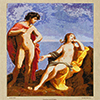 |
 |
 |
|||||
 |
 |
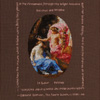 |
||||||
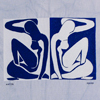 |
 |
 |
 |
 |
||||
 |
 |
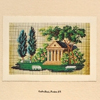 |
 |
 |
||||
 |
 |
 |
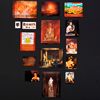 |
 |
||||
 |
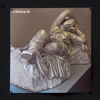 |
 |
 |
 |
||||
 |
 |
|||||||
Somewhat to my own surprise as a contemporary artist, I have repeatedly found my work returning to Greek legend and myth. I have dealt with figures from these stories a number of times: Penelope, Arachne, Philomela, the Fates. Ariadne's Thread marks the first time I have explored one Greek myth through an extended series of works, following it in all its complications from beginning to end. The story of Ariadne is often told first as the story of Theseus, the hero who killed the Minotaur, the monster—half bull, half man—of the Cretan labyrinth. That feat would have been impossible without Ariadne, who gave Theseus the clue that allowed him, having found his way into the labyrinth, to then find his way out. Her reward: Theseus eloped with her only to desert her, abandoning her on the island of Naxos. Actually he sailed away while she was asleep. The God Dionysus, or Bacchus, however, picked this moment of despair to propose to her. And as his wife, the wife of a god, she became immortal, her crown becoming one of the constellations in the night sky, where it stands to this day. The story has many turning meanings, and over the centuries has fascinated numerous artists and writers, from Titian to Warhol, from Ovid to Eliot and Borges. For me, an artist who embroiders, it is powerful and symbolic as the story of a thread—for the key, the lifeline, that Ariadne gives Theseus is in fact a thread, which he lays down to guide himself through the labyrinth. The labyrinth itself, of course, is an enduring symbol, around the world and across the millennia—one of those images that is invested with significance in the unconscious. The Minotaur, as a fusion of animal and man, has been seen as a sign for the struggle to understand what it is to be human. And the story is one of emotional risk, in which both the punishments and the prizes that risk entails are fully realized. In loving Theseus, and helping him and running away with him, Ariadne cuts herself off from her previous life. She gives up everything, and loses—but then she triumphs, trading in a king for a god, the Apollonian for the Dionysian. I have explored this story, in all its contradictory phases and details, through a large group of works: sixteen embroideries, some sewn by hand, some by digital sewing machine; and, for the first time in my work, I have produced a tapestry, on the scale of a history painting, that has been woven with computerized technology in a Belgian mill. The series as a whole, then, appropriately for the story of Ariadne, is a kind of minicompendium of the possibilities of thread. About three or four years into the Ariadne project, I began to feel I might need to find my own way out of the labyrinth. So I decided to print out all the images I'd collected in the extensive picture files I'd built up in my research, and to review the ideas and connections that had been part of my process. I next found myself arranging these images into thematic groups—a Picture Archives that for me came to constitute a work in itself. To that end I included in it an embroidery based on a primary source for the myth, Catullus's Poem 64, in which the narrator describes an embroidered coverlet whose images recount Ariadne's tale. Needless to say, the Picture Archives had an effect exactly the opposite of what I had intended: I found myself unable to let go of Ariadne's thread, and immediately began a companion project, which I am working on now. The Picture Archives also morphed into a web project at the invitation of ZgPress.com
|




